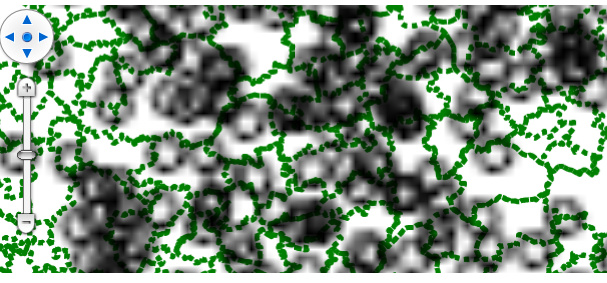Hallo,
i try to use some WFS Layers in germany-saxonia (ThinkGeo Version 14.3.1) with the following code:
string serviceLocationUrl = @"https://luis.sachsen.de/arcgis/services/luft/tierhaltung_wfs/MapServer/WFSServer";
string typeName = "tierhaltung_wfs:Tierhaltung";
wfsV2FeatureLayer layer = new WfsV2FeatureLayer()
{
WebProxy = proxy,
ServiceLocationUrl = serviceLocationUrl,
TypeName = typeName,
TimeoutInSeconds = 500
};
layer.ZoomLevelSet.ZoomLevel01.DefaultPointStyle = PointStyle.CreateSimplePointStyle(PointSymbolType.StarCircled, GeoColors.Black, 5);
layer.ZoomLevelSet.ZoomLevel01.ApplyUntilZoomLevel = ApplyUntilZoomLevel.Level20;
layer.FeatureSource.ProjectionConverter = new ProjectionConverter(sridWfs, sridView);
First, the layer will shown. But when I zoom, the WfsV2Overlay will never refreshed (see the picture). The same behavior with
string serviceLocationUrl = @"https://geoportal.umwelt.sachsen.de/arcgis/services/luft/ie_anlagenbestand_wfs/MapServer/WFSServer";
string typeName = "ie_anlagenbestand_wfs:Anlagenbestand_nach_IE-Richtlinie";

And when I try to get the Columnvalues, the Columns are created but with no Values.
var source = layer.FeatureSource;
try
{
source.Open();
var features = source.GetAllFeatures(ReturningColumnsType.AllColumns);
source.Close();
}
catch (Exception ex)
{
MessageBox.Show(ex.Message);
}
Basically, I try to develop a module, that connects with the WFS Services and store the features in a database for offline use.
So I use WfsV2FeatureLayer as a base class and for every WFS Service that I have to use, I will develop a specialised class.
Please give me an advice, how to do that.
Regards Torsten
